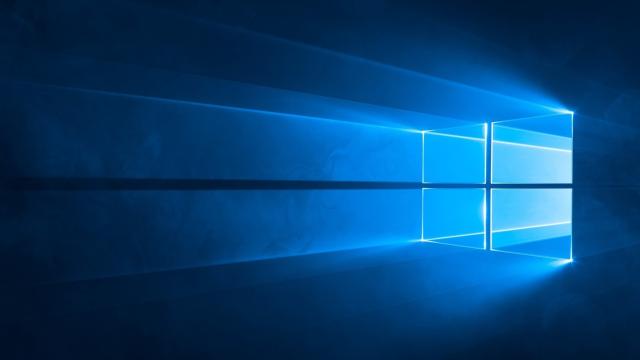Windows 10 users may soon notice their hard drive storage organised a bit differently.
Starting with the next big Windows 10 system update, codenamed 19H1, the operating system will allocate a portion of your PC’s hard drive as reserved storage for important system updates and temporary files (periodically deleting them as necessary). When it’s time to perform a system update, the OS will clean out the reserved space and use it to store the update files.
Even though losing a chunk of drive space sounds inconvenient, this setup has its benefits. Temporary files will now be cordoned off from your main storage space, making them less likely to build up on your hard drive, and Windows Update files will have their own dedicated destination.
While reserved space allocation will happen automatically and cannot be disabled without some registry modifications (if that even sticks when Microsoft’s update goes public in April), there are ways to minimise how much room it will take up. Let’s go over exactly how much space Microsoft is planning to section out on your PC, and how to keep it as low as possible.
Reducing Windows 10 Reserved space
Microsoft’s estimate is that the operating system will reserve around 7GB at first, though that number could change based on user feedback and performance data. However, you have a few options you can try for reducing the space Microsoft reserves for system updates.
Uninstall optional features
Open the Windows Start menu then go to Settings > Apps > Apps & features > Manage optional features.
From here, you can uninstall optional features you don’t want. It’s worth noting that not all optional features are manually installed, some are automatically added or come pre-installed on your PC, so it’s possible you’ll find something to cut here.
Remove languages you aren’t using
Bring up the Start menu, then go to Settings > Time & Language > Region & Language.
Under “preferred languages” is a list of currently installed language packs. You should delete any you don’t want or need, though be sure not to delete the languages you actually use. As with the optional features, check this even if you think you haven’t installed extra language packages, on the off-chance that you previously downloaded an extra language pack and don’t remember.
Preview reserved storage space
Even after taking the preventative measures above, you won’t be able to see how much space is going to be reserved on your hard drive until it’s officially allocated by the 19H1 version of Windows 10.
However, you can circumvent the guessing game by opting into the Windows Insider program to try out the Windows build that contains this feature (Build 18298). To do this, you’ll need to apply to the Insider program and follow the steps to download the newest Insider OS build (in the Fast ring). After that, you’ll need to complete this “quest” through the Windows feedback hub to enable the feature.
Remember that the Windows Insider program is essentially signing up to be a beta tester, which opens up the possibility that you’ll encounter bugs or stability issues when using the Insider Builds before their public releases.

Comments
One response to “How To Reduce Windows 10’s Upcoming Reserved Hard Drive Storage Requirement”
Well, that’s my little ASUS 32GB drive/flash laptop buggered, then!